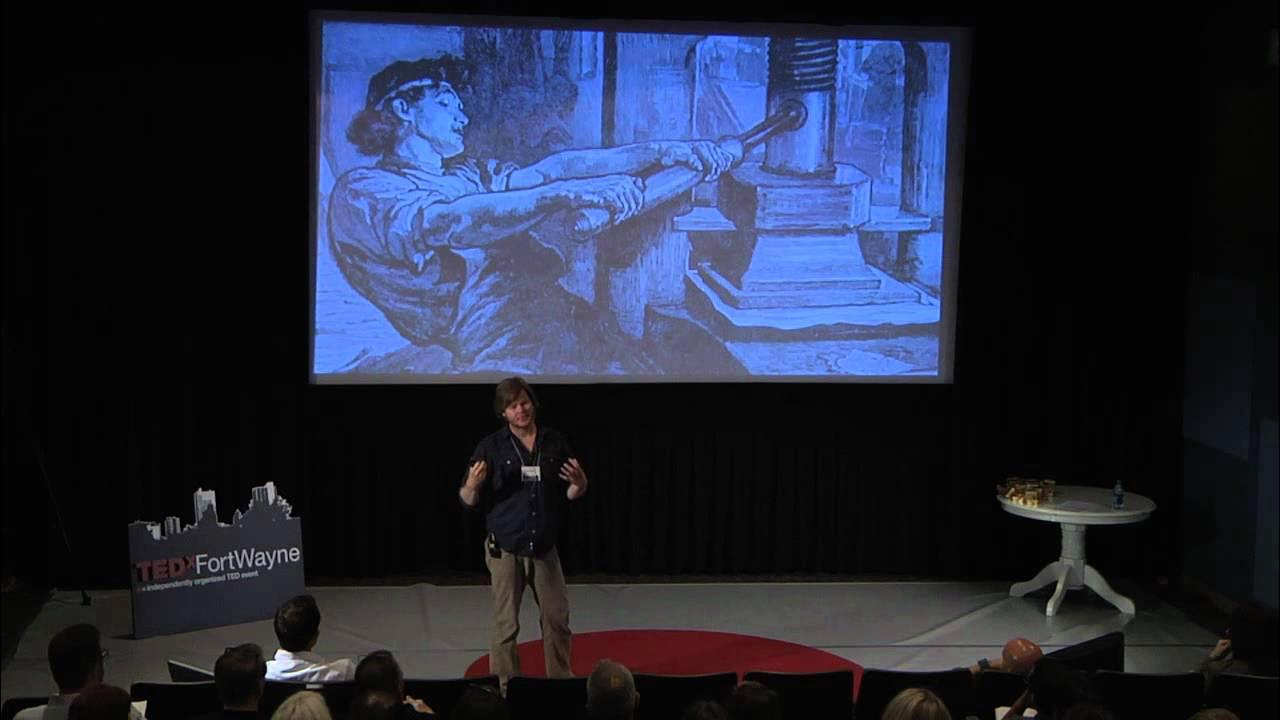Everything is a Remix Part 3 (Original Series, 2011)
Summary
TLDRCreativity is often shrouded in myths of inspiration and genius, but it actually involves ordinary processes of copying, transforming, and combining existing ideas. This video explores how major innovations, such as the steam engine, typewriter, and lightbulb, emerged through incremental improvements and combining existing elements. It highlights examples like Apple's Macintosh, which succeeded by merging the graphical interface with household appliance simplicity. The video also discusses 'multiple discovery,' where similar innovations emerge independently. Ultimately, it underscores the interconnectedness of creativity and how technological advancements build on the work of others.
Takeaways
- 🌟 Creativity is not a magical process but a result of applying ordinary thought tools to existing materials.
- 📚 Copying is fundamental to learning and is a necessary step towards fluency in any domain, including the arts.
- 🎨 Artists often begin by producing derivative work, as seen in the early careers of Bob Dylan, Richard Pryor, and Hunter S Thompson.
- 🛠 Transformation involves taking an idea and creating variations through a time-consuming process of tinkering, which can lead to breakthroughs.
- 💡 Innovations like the steam engine, typewriter, and lightbulb were not original ideas but rather improvements on existing concepts.
- 🔗 The most dramatic creative results can occur when ideas are combined, leading to major breakthroughs in history.
- 🖥️ Xerox's Alto computer was ahead of its time with a graphical user interface, but it was Apple's Macintosh that popularized the concept for the home.
- 🔄 The Macintosh was a result of combining the graphical interface with the idea of a computer as a household appliance, simplifying user interaction.
- 📈 Apple's Macintosh demonstrated the power of combining existing technologies in new ways to achieve commercial success.
- 🔍 The interconnectedness of creativity has been obscured by cultural myths, but technology is revealing these connections.
- 🌐 The internet and other technologies are examples of the cumulative work of many people over time, rather than the product of a single genius.
- 🤔 The concept of 'multiple discovery' suggests that major breakthroughs often emerge independently from different places at similar times.
Q & A
What is the common myth surrounding the act of creation according to the script?
-The common myth is that creativity comes via inspiration, original creations break the mold, and they are the products of geniuses that appear as quickly as electricity can heat filaments.
Why is copying considered an essential part of the learning process in creativity?
-Copying is essential because it allows us to become fluent in the language of our domain, which is a necessary foundation of knowledge and understanding before we can introduce anything new.
Can you provide an example from the script of an artist who started their career by producing derivative work?
-Bob Dylan's first album contained eleven cover songs, which is an example of starting a career by producing derivative work.
What did Hunter S Thompson do to understand the writing of a great novel?
-Hunter S Thompson retyped 'The Great Gatsby' to get the feel of writing a great novel, emphasizing the importance of emulation in the learning process.
How does the script describe the process of creating something new through transformation?
-The process of creating something new through transformation involves taking an idea and creating variations, which is time-consuming tinkering but can eventually produce a breakthrough.
What is an example of a major improvement that came from the transformation of an existing idea?
-James Watt created a major improvement to the steam engine after being assigned to repair a Thomas Newcomen steam engine and spending 12 years developing his version.
How did the combination of ideas lead to creative leaps in history?
-Combining ideas can lead to creative leaps by connecting them together, producing some of history's biggest breakthroughs, such as the printing press, the assembly line, and the internet.
What was the significance of the Xerox Alto in the development of personal computers?
-The Xerox Alto was significant as it invented the modern personal computer with a mouse-driven system and a graphical user interface, which was way ahead of its time.
How did Apple's approach to the Macintosh differ from the Xerox Star?
-Apple aimed to merge the computer with the household appliance, making the Macintosh a simple device for home use, unlike the Xerox Star which was intended for professional use.
What was the key innovation that set the Macintosh on a path towards long-term success?
-The key innovation was the combination of the graphical interface with the idea of the computer as a household appliance, which led to a cascade of transformations that made the Macintosh user-friendly and affordable.
What is the concept of 'multiple discovery' as mentioned in the script?
-The concept of 'multiple discovery' refers to the same innovation emerging from different places or individuals around the same time, suggesting that major breakthroughs may be somewhat inevitable due to concurrent work in the field.
Outlines

Cette section est réservée aux utilisateurs payants. Améliorez votre compte pour accéder à cette section.
Améliorer maintenantMindmap

Cette section est réservée aux utilisateurs payants. Améliorez votre compte pour accéder à cette section.
Améliorer maintenantKeywords

Cette section est réservée aux utilisateurs payants. Améliorez votre compte pour accéder à cette section.
Améliorer maintenantHighlights

Cette section est réservée aux utilisateurs payants. Améliorez votre compte pour accéder à cette section.
Améliorer maintenantTranscripts

Cette section est réservée aux utilisateurs payants. Améliorez votre compte pour accéder à cette section.
Améliorer maintenantVoir Plus de Vidéos Connexes

Everything is a remix: Kirby Ferguson at TEDxFortWayne

How to generate the most Creative Ideas(even if you are not creative)

Memanfaatkan Peluang Usaha Dengan Kreatif dan Inovatif | Produk Kreatif dan Kewirausahaan

How to THINK Like Albert Einstein

Daniel Dennett: Memes 101 | How Cultural Evolution Works | Big Think

Creativity, innovation and entrepreneurship: Glenn Gaudette at TEDxWPI
5.0 / 5 (0 votes)
